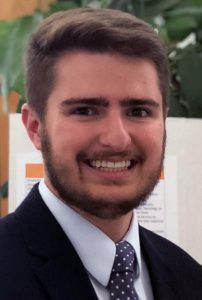Major: Geography and Environmental Studies

Abstract: Applying Lessons from Canyon de Chelly and Bears Ears National Monuments to Equitable Co-management of Grand Canyon National Park
Describe your project:
Drawing from management policies at Canyon de Chelly and Bears Ears National Monuments, I proposed methods for the National Park Service and the Grand Canyon’s 11 historically associated tribal nations to co-manage Grand Canyon National Park.
Who is your mentor for your project? Why did you choose them?
My mentor was Dr. Melissa Mark, Director of the Doris Duke Conservation Scholars Program (DDCSP) at Northern Arizona University. I connected with Dr. Mark after being accepted into the DDCSP, a two-year environmental leadership program which began this summer with an eight-week immersion program in the Southwest. I also worked closely with Dr. Ed Grumbine, Mr. Deon Ben, and Ms. Maria Archibald, staff members at the Grand Canyon Trust.
How did you become interested in this project?
This summer I had the opportunity to interact with a variety of experts and stakeholders, including land managers and indigenous people. Learning about the history of public lands and native dispossession (every National Park/Forest/Monument, and indeed all land in the United States, was the land of indigenous people until it was taken by force or farce), led me to investigate current efforts to involve Native Americans in the management of their historic lands. I visited both Canyon De Chelly and Bears Ears National Monument during the DDCSP and learned that they are pioneering examples of federal-tribal co-management. After hearing that the Grand Canyon has similar if not more extensive connections to Native American nations, I decided to examine how Canyon de Chelly and Bears Ears could inform more equitable management of the Grand Canyon.
What has been the hardest part about your research/what was the most unexpected thing about being a researcher?
The hardest part of this research project was synthesizing the information and conducting additional research within a condensed timeframe. After gathering information and meeting with stakeholders for the first seven weeks of the program, the research project had to be completed within just the last week. Despite the time restrictions, I was happy with how quickly it came together and its clarity.
What has been the most rewarding part?
The most rewarding part was being able to tie together distinct ideas and propose solutions to a critical issue. Federal-tribal co-management has only been enacted at a few public land units, so it was exciting to look into a new school of thought and suggest how it could be implemented at arguably the most well-known park in the United States.
How will you disseminate your research?
At the end of my program I participated in a poster presentation session with the other members of my cohort. I am currently exploring opportunities to refine my research for further dissemination.
What is your advice to other students about getting involved in research?
Take any opportunity you can to do research. Apply for as many programs as you can and reach out to professors on campus for opportunities here at UMBC. Even if a program or internship is not explicitly focused on research, if you take the initiative you can create a research project out of it.
What are your career goals?
After graduation, I plan to pursue a dual degree in law and environmental studies. Then I hope to take on a career in environmental law, focusing on equitable public lands management.
9/17/18